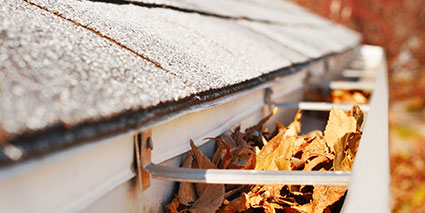Overflowing Gutters Can Damage Your Home
Blocked… or broken?
Your roof is a big catchment area when it rains. It is the responsibility of your gutters to move all this flowing water off your roof and into storm water. When gutters start overflowing, it is often a sign of a problem. If left unchecked, you risk structural damage to your home.
During torrential downpours, it is common for water to spill over from gutters. But a good system should be able to handle almost all of the normal rainfall during the year. Bad quality or old gutters increase the risk of problems associated with bad drainage and overflowing.
A high quality gutter not only can handle high rates of rainfall, they can resist the extra strain during period of heavy torrential rainfall. A good gutter system maintains both the appearance and structural integrity of your home.
Do your gutters need replacement? Find out more about quality guttering here.
Why do gutters overflow?

When was the last time you cleaned your gutter?
An overflowing gutter could be due to debris blocking the gutter or downpipe and stopping the flow of water. This may be because the gutters are not cleaned regularly enough. Along with water, gutters tend to collect leaves and dirt. These leaves can stop the flow of water to the gutter downpipes, which causes water to overflow the side of the gutter.
The problem may also be that your gutters are leaking, rather than overflowing. Inspect your gutters for rust, loose fittings, sagging or bowing, cracks and fascia water damage.
Are overflowing gutters a big problem?

An overflowing gutter is the sign of a blocked, damaged or ineffective gutter system. Gutters play an important role in diverting water away from your roof and into stormwater. This protects the outside of your house, and prevents water seeping into foundations and causing costly structural damage.
Constant gutter overflowing will eventually degrade the gutters further, as well as compromise your home’s roof, walls and foundations. Putting off gutter cleaning, repairs or replacement will only lead to further, and more expensive, problems later down the track.
Improper gutter maintenance can also encourage pests. Pools of stagnant water due to ineffective drainage is a potential breeding ground for mosquitoes and other insects.
What should I do?
Overflowing gutters could be a sign of poor gutter maintenance, blocked drains or broken gutters. The first thing to do is to grab a ladder, dust off the spider webs and inspect your gutters. Some things to look out for include:
- Excessive debris, dirt and leaves
- Discolouration, blistering and a rough 'sandpaper feel' to the gutter indicates rust under the paint
- Holes in the gutters or downpipes. These typically occur where the water is pooling
If your gutters are filled with leaves and debris, then it’s time to get cleaning. Remove debris with the help of a trowel, hose, gloves and a bit of elbow grease.
If, after cleaning, gutter damage has been revealed or the gutter is still not properly draining, then your best bet is to contact a professional to inspect the problem and recommend a solution.
How can I prevent overflowing gutters?
When it comes to gutters, prevention is better than a cure.
First, regular maintenance and cleaning is key. At least twice a year, you should inspect and clean your gutters, ideally late autumn and spring.
You should also be maintaining or removing any nearby trees or branches nearby the gutters. These trees are a source of leaves and sticks which are clogging up the system, so keeping them at bay will reduce your future gutter problems.
You can also improve your guttering system. A leaf or gutter guard will stop a large amount of debris flowing into your gutters. A better gutter system altogether, such as continuous guttering, will ensure that your gutters stand up to tough weather conditions.

It’s time to call the guttering experts
If your gutters are overflowing, rusty, buckled and unsightly, it might be high time to replace your gutters.
Although you can repair gutters, more often than not, this will be money down the drain. Eventually the rest of the guttering will follow, and you’ll need to replace the whole system.
A cost-effective measure is total replacement with Colorbond. Alcoil’s guttering lasts much longer than regular steel, meaning a longer gutter lifespan with minimal repairs.
While the upfront investment is higher than patch-up repairs, you’ll solve any underlying issues and save far more in the long term.
Call Alcoil on (03) 98874563 to find out how your home could benefit from better guttering.

